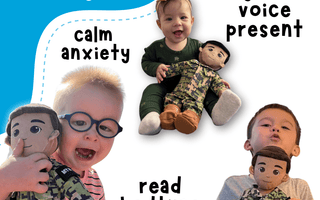
Helping Kids Feel Brave During Deployment
Deployments can be challenging times for military families. While adults may have some understanding of what’s happening, children often struggle to comprehend why a loved one must be away for so long. With bravery being a crucial trait in a military household, teaching bravery to children is essential. This guide aims to provide comforting strategies to help your kids feel brave and resilient during these times of separation.
Understanding the Importance of Bravery
For military families, bravery is more than just a word; it's a way of life. However, helping children understand this concept requires patience and creativity. Children associate bravery with knights and superheroes, yet the real world offers many opportunities for demonstrating courage. Explain to your kids that being brave means facing fears, showing kindness, and supporting one another even when it feels tough. With this understanding, teaching bravery to children can become a bonding experience that reinforces family values.
Maintain Open Communication
Communication is key to ensuring children feel secure and brave during a loved one's deployment. Encourage your child to express their feelings and fears openly. By normalizing these discussions, you present bravery as acknowledging vulnerable emotions but having the strength to move forward. Consider scheduling regular video calls or sending messages that provide reassurance and closeness, despite the physical distance. Simple acts of staying in touch can significantly boost a child's courage and resilience.
Incorporate Books and Stories about Bravery
Stories have a powerful way of connecting with young minds. Select children’s books that celebrate characters demonstrating bravery in relatable situations. Sharing stories where protagonists overcome challenging circumstances can serve as valuable teaching tools. Afterwards, discuss the story together, prompting your child to think about actions they can take to be brave in their own lives. This practice not only teaches bravery to children but also enhances their problem-solving skills and empathy towards others.
Encourage Participation in Brave Activities
Encouraging your child to engage in activities that push them slightly outside their comfort zone can be a fun and effective way to teach bravery. Whether it's joining a new club, learning a new skill, or participating in a group project, each activity becomes an opportunity to practice courage. Celebrate their achievements, big or small, and highlight the bravery they exhibited throughout the process. This reinforcement will instill confidence and a sense of accomplishment.
Create a Supportive Environment
Fostering an environment where children feel safe and supported is crucial in helping them develop bravery. Establish routines that offer stability, such as family dinners or bedtime rituals, to provide a sense of normalcy and security. Surround them with positive role models—teachers, coaches, friends’ parents—who exemplify the values you wish your child to learn. A supportive community reinforces the idea that asking for help or leaning on others is a part of being brave and strong.
Conclusion: Growing Together in Courage
While deployment brings its share of challenges, it also presents opportunities for growth. By focusing on teaching bravery to children, you foster resilience and independence that will serve them well throughout life. Remember, this journey of nurturing courage is as much about strengthening family bonds as it is about individual growth. As you walk this path together, know that every step in facing and overcoming fear is a testament








